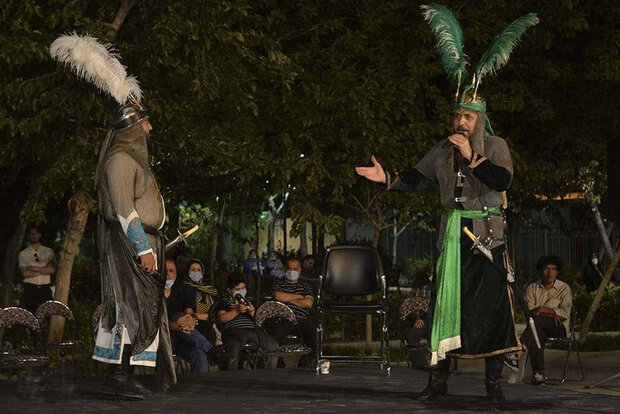Ashura; Unwavering stance of truth against falsehood

The Day of Ashura commemorates Imam Hussein’s (AS) martyrdom in the tragic Battle of Karbala on October 10, 680 (Muharram 10, 61 AH).
Despite the fact that centuries have passed since that occurrence, it continues to inspire huge numbers of Shia Muslims and even non-Muslims around the world to follow in Imam Hussein’s footsteps in their struggle for independence and emancipation.
Imam Hussein (AS) was a well-known Muslim figure in Medina. He was recognized for his piety and virtues. At the same time, a succession was taking place in Damascus, the capital of the Umayyad caliphate, which resulted in Mu’awiyah appointing Yazid as the new caliph, a move that shocked the Islamic world because Yazid was unqualified to command the fledgling Islamic system.
The Ashura event lasted about half a day. However, it was a pivotal moment in history. Many attempts were made to persuade people to forget the events of Ashura, but many have never done so. Instead, millions came to mourn the injustice against the Imam and acquired crucial lessons from history.
Shia Muslims typically conduct special rituals during the first 10 days of Muharram, which this year spanned from July 19 to 28.
Hundreds of thousands of pilgrims from Iran and other countries head to the holy Iraqi city of Karbala — where Imam Hussein (AS)’s shrine is located — to mark Ashura.
During these days, Imam Hussein (AS), the third Imam of the Shias, and seventy-two persons of his followers were martyred with a thirsty lip in the war with the forces of Yazid in the event of Karbala.
This mourning is not normal and is the greatest mourning happening this month.
This general mourning begins by wearing black clothes and blackening the streets, mosques, Husayniyah, etc., with mourning flags.
The night of Ashura in Iran is called Shaam-e Ghariban, meaning “the night of strangers” and those who are far from home and help. People light candles in holy places and gatherings in every corner of the country.
The tragedy is also observed in some other countries with sizeable Shia communities, including Iraq, Afghanistan, Azerbaijan, Bahrain, Lebanon, Pakistan, Saudi Arabia, and Syria.

Iranians hold mourning processions across the country and listen to elegies in commemoration of Ashura, while benefactors distribute votive food, known generically as Nazri.
As is common within Islam, distributing free food to honor the sacrifice of others is a mainstay ritual of Ashura.
Kiosks and stalls are set up across the capital city of Tehran, with more than 14,000 “heyats” officially registered to make food and drink offerings including tea and fruit juices.
Everyone in Iran takes part in the rituals with even non-Muslim residents often being included in the events with neighbours knocking on their doors offering food.
Over the years, the tradition of giving Nazri food to locals and denizens has taken on a more industrial characteristic with companies, employers, and organizations offering the food to those who accept it.
In the capital, families on different streets and alleyways of Tehran make several foods, often different stews or rice dishes as well to give to their immediate neighbors.
***Ta’zieh’s performance in Ashura

Ta’zieh represents religious events, historical and mythical stories, and folk tales. Each performance has four components of poetry, music, song, and motion.
Ta’zieh was registered on UNESCO’s List of the Intangible Cultural Heritage of Humanity in November 2010.
It is a kind of drama that depicts the event of Ashura and is performed in Mahur, Chargah, and Shur Baghdad radifs of Iranian music.
It is based on the Ashura culture and the brave war and martyrdom of Imam Hussein (AS). It is a religious play dated back to 9th-century dynamites and Buyids. However, Ta’zieh’s performance began during the Safavid era (1501-1736) and flourished during the Qajar era.

Karbala was an actual and metaphorical venue where the Truth confronted the Lie, where justice spoke vibrant and audible in the face of prejudice, and where courage, passion, and devotion preceded attachment, worldliness, and obstinacy.
The Muharram ceremonies symbolize the eternal and unwavering stance of truth against falsehood and humanity’s struggle against injustice, tyranny, and oppression.
Reported by Amin Mohammadzadegan Khoyi
source: en.mehrnews.com





